croptoptux (![[personal profile]](https://www.dreamwidth.org/img/silk/identity/user.png) croptoptux) wrote2025-04-26 11:26 pm
croptoptux) wrote2025-04-26 11:26 pm
Entry tags:
Kircher's CHINA ILLUSTRATA
It came up in conversation earlier today, "what style of Chinese romanization did 'Confucius' come from?" So, of course, I had to go on a Wikipedia scavenger hunt.
The first notable English translation of Confucius's Analects was was published in 1861, according to Wiki laoshi. The first French one was in 1930. That doesn't seem right. The first Opium war predates that by nearly 20 years.
If you guessed "Jesuit missionaries", give yourself a gold star. The first credited standardized Romanization of Chinese was done by Matteo Ricci and Michele Ruggieri for a Portuguese<-->Chinese dictionary in the 1580's. I guess that makes sense, since Macao was a Portuguese territory for a while. Their dictionary proceeded to get misplaced in the archives for 400 years. Whoops. Ruggieri is credited for being the first "sinologist", and it appears his is the first translation of the Analects of Confucius, into Latin, obviously.
The next monk credited with a standardized Romanization system was Lazzaro Cattaneo, one of their contemporaries. His work is lost in the void, but several of his contemporaries used his system in their own books about China. I tried roping an Italian friend into this little research quest hoping to possibly find anything more specific from a non-English angle. It doesn't appear that anyone's really looked into Cattaneo Romanization, and why would they? We have Hanyu Pinyin now.
I'll stick a pin in that for if I ever get into grad school. This is bound to give scholars in both the Asian studies and the Classics departments aneurysms.
My aforementioned friend sent me a link to a Google Books scan of Athanasius Kircher's China monumentis, qua sacris qua profanis, nec non variis naturae & artis spectaculis, aliarumque rerum memorabilium argumentis illustrata
I wish my Latin wasn't so rusty. This thing has some crimes against orthography in the last couple chapters that look absolutely hilarious and especially cringe.
It seems that the "China" in China Illustrata really means "orient". Kircher goes over everything from Turkey to India to Japan, and goes onto innumerable tangents. I have to pour one out for the typesetters here. Typefaces used in this book include, but are not limited to: Latin, Latin italic, the German Eszetts, Chinese characters, Syriac, Arabic, Ancient Greek with all the diacritics, Ethiopian, Biblical Hebrew with no diacritics, and Sanskrit.
There are also several prints in this book with Chinese characters, and I could only clearly read two: the ones on pages 114 and 115. Everything else is an utter clusterfuck.
The real fun starts on page 227.
(Let's see if image URLs from Tumblr will actually embed here with HTML)
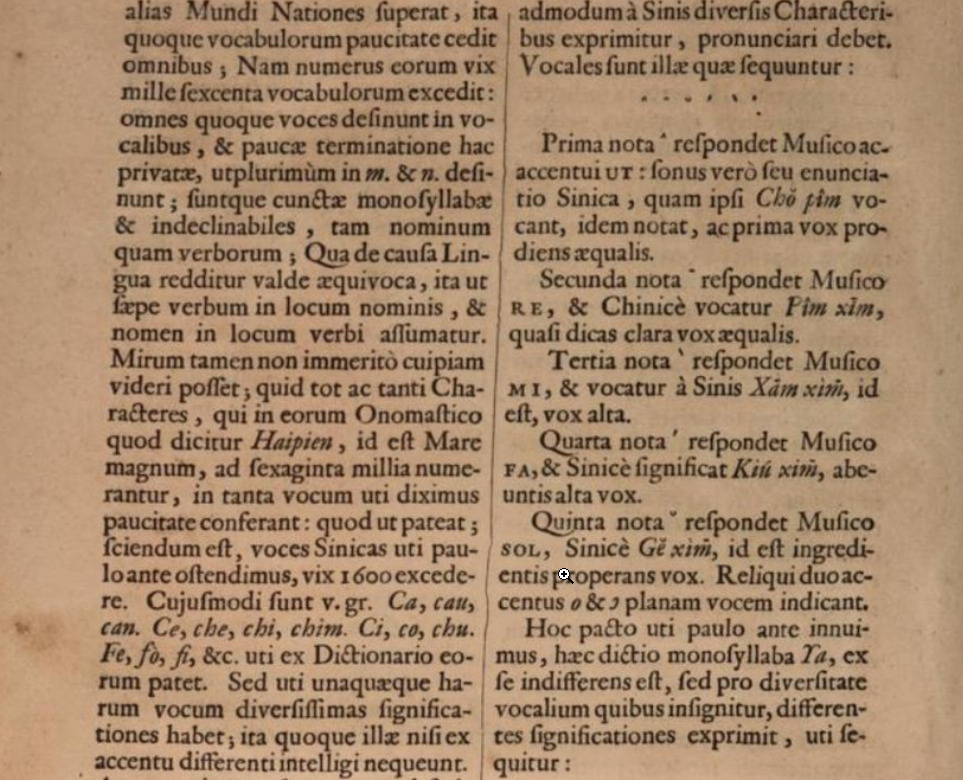
P. 12 right column. IT HAS TONES!!!!!
There's an attempted side by side romanized and latin translation with a bajillion notes on pages 13-28. Unfortunately, this particular scan of the book does not include the original Chinese passage.
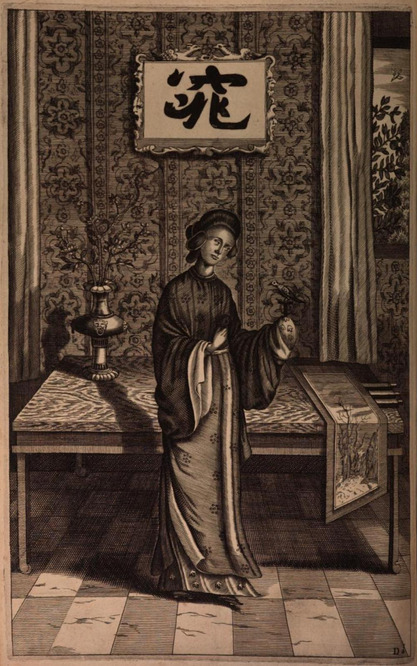
P. 114 窕 tiao3
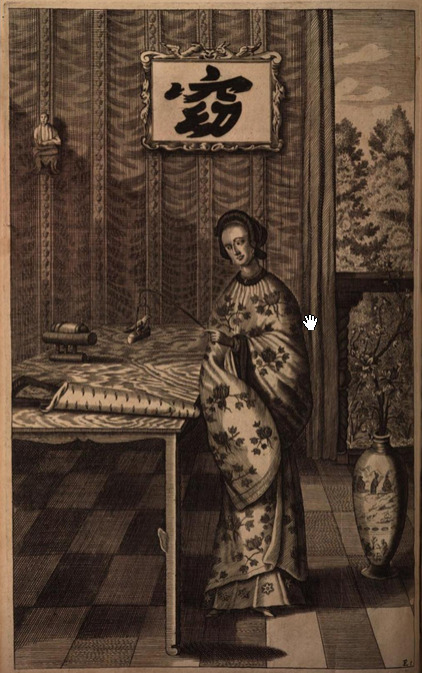
p. 115 窈 yao3 I think. Whoever did these two plates was clearly being paid better than some of the other illustrations found here.
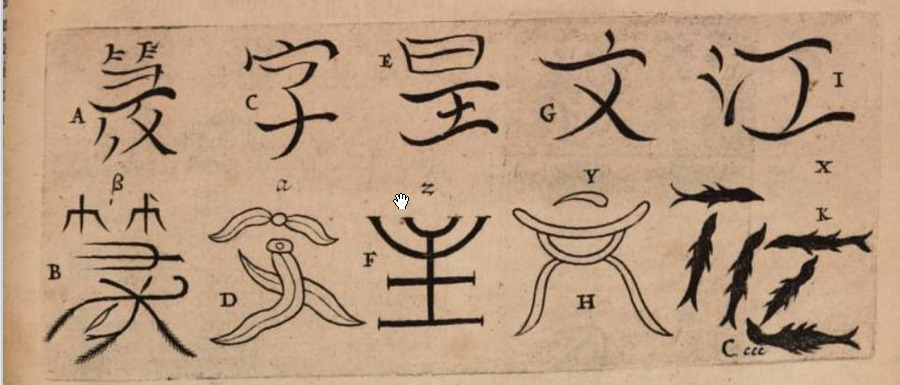
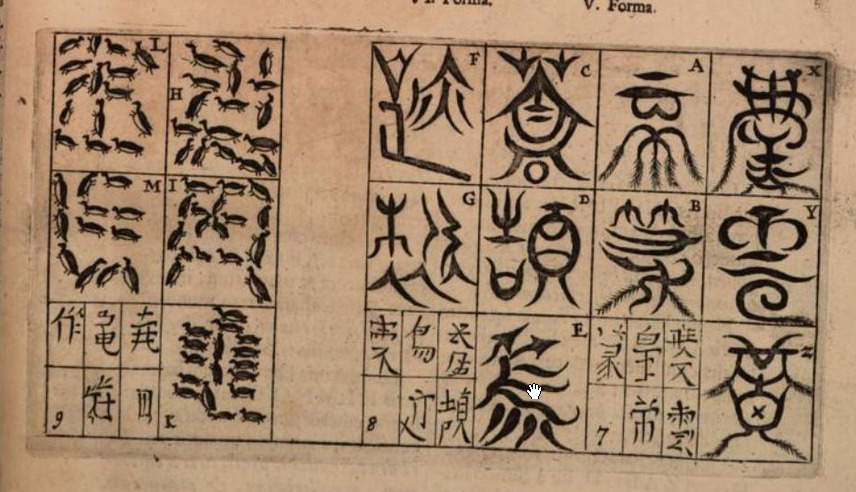
I HAVE QUESTIONS...
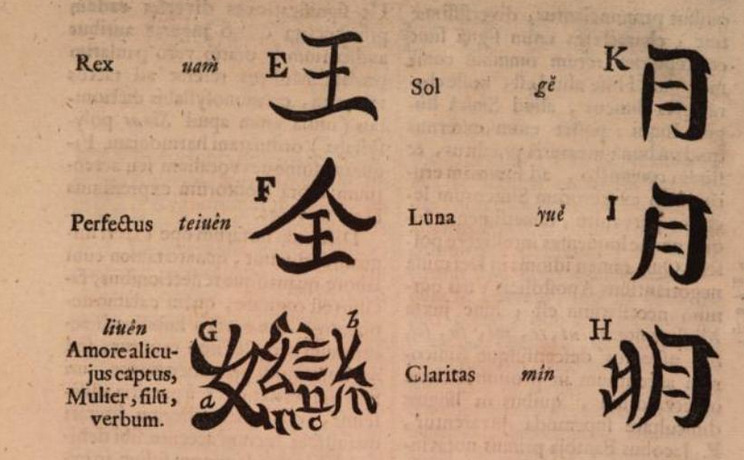
WHAT IS THAT LIAN SUPPOSED TO BE?
The most fascinating part might be the illustrations with actual text on them.
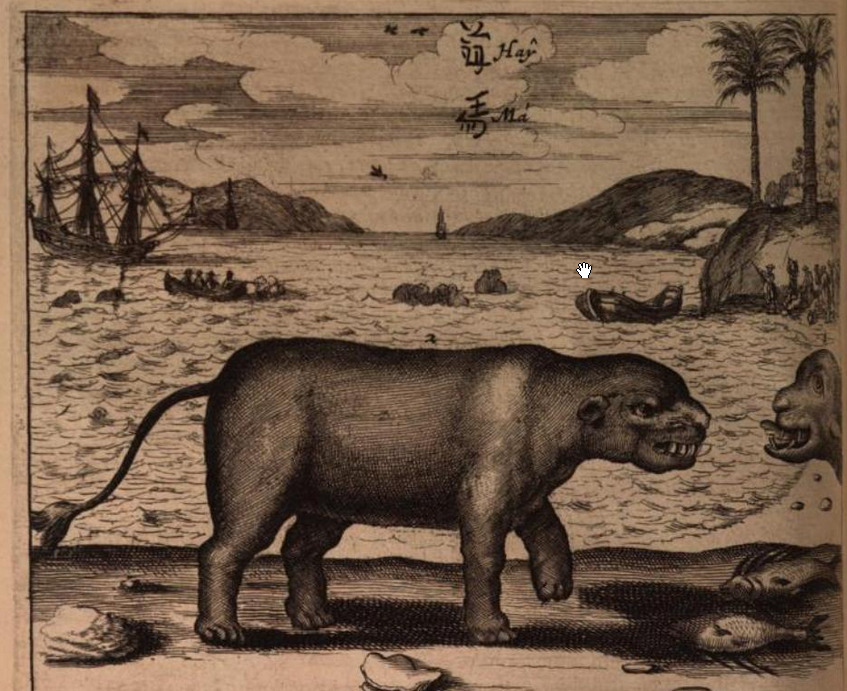
this one might actually be the one with the best attempt at Chinese handwriting.
p 192. 海馬 Haŷ mà (Pinyin: hǎimǎ) Hippo!
Many of the others are just... not great.
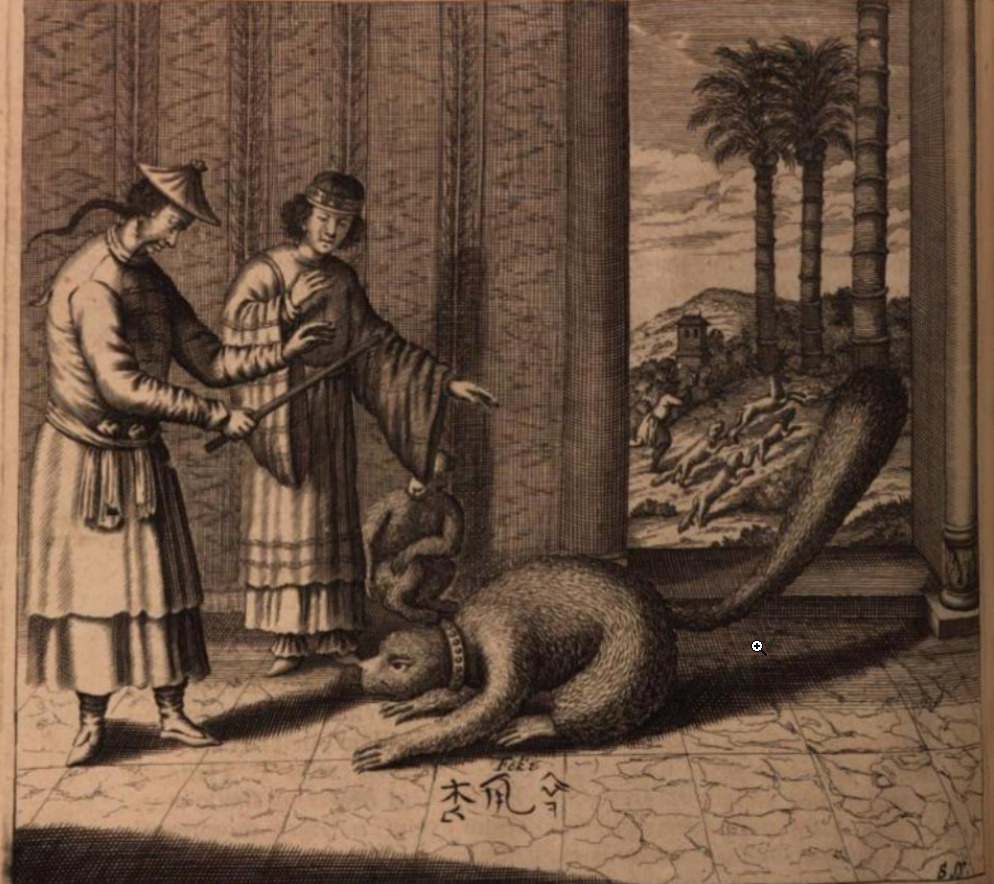
p 194. What is this? 栗鼠 lìshǔ? 松鼠 sōngshǔ? My shot in the dark guess is an Indian palm squirrel, but that doesn't really help with the half scrawled radical on the first character.
The clearest image from this collection with both Chinese and Romanized type has a better scan on the Wikipedia page for Xu Guangqi. I'm still kind of mad that I had to scour the internet for Ancient Greek Diacritics. But, maybe, just maybe, Padre Cattaneo was onto something there.

On the Left is Matteo Ricci.
利瑪竇西泰 Ly mà teú sī tảī
Pinyin: Lì Mǎdòu xītài
On the right side is 徐光啓 保祿 玄扈
pinyin: Xú Guāngqǐ Bǎolù Xuánhù
Siú guam` [not transcribed] pao lὁ Hiven Hú
I can't do seal script. That always goes over my head.
It kind of sucks that all this cool parts of linguistics happens in the Jesus fandom.
But I always find this sort of manuscript intersectionalism (??) really fascinating. Like, the part where two totally different cultures butt up against each other and you can see the places where the inevitable struggle to communicate crops up, and what each side takes away from the other trying to explain it. Human just want to talk to each other.
The first notable English translation of Confucius's Analects was was published in 1861, according to Wiki laoshi. The first French one was in 1930. That doesn't seem right. The first Opium war predates that by nearly 20 years.
If you guessed "Jesuit missionaries", give yourself a gold star. The first credited standardized Romanization of Chinese was done by Matteo Ricci and Michele Ruggieri for a Portuguese<-->Chinese dictionary in the 1580's. I guess that makes sense, since Macao was a Portuguese territory for a while. Their dictionary proceeded to get misplaced in the archives for 400 years. Whoops. Ruggieri is credited for being the first "sinologist", and it appears his is the first translation of the Analects of Confucius, into Latin, obviously.
The next monk credited with a standardized Romanization system was Lazzaro Cattaneo, one of their contemporaries. His work is lost in the void, but several of his contemporaries used his system in their own books about China. I tried roping an Italian friend into this little research quest hoping to possibly find anything more specific from a non-English angle. It doesn't appear that anyone's really looked into Cattaneo Romanization, and why would they? We have Hanyu Pinyin now.
I'll stick a pin in that for if I ever get into grad school. This is bound to give scholars in both the Asian studies and the Classics departments aneurysms.
My aforementioned friend sent me a link to a Google Books scan of Athanasius Kircher's China monumentis, qua sacris qua profanis, nec non variis naturae & artis spectaculis, aliarumque rerum memorabilium argumentis illustrata
I wish my Latin wasn't so rusty. This thing has some crimes against orthography in the last couple chapters that look absolutely hilarious and especially cringe.
It seems that the "China" in China Illustrata really means "orient". Kircher goes over everything from Turkey to India to Japan, and goes onto innumerable tangents. I have to pour one out for the typesetters here. Typefaces used in this book include, but are not limited to: Latin, Latin italic, the German Eszetts, Chinese characters, Syriac, Arabic, Ancient Greek with all the diacritics, Ethiopian, Biblical Hebrew with no diacritics, and Sanskrit.
There are also several prints in this book with Chinese characters, and I could only clearly read two: the ones on pages 114 and 115. Everything else is an utter clusterfuck.
The real fun starts on page 227.
(Let's see if image URLs from Tumblr will actually embed here with HTML)

P. 12 right column. IT HAS TONES!!!!!
There's an attempted side by side romanized and latin translation with a bajillion notes on pages 13-28. Unfortunately, this particular scan of the book does not include the original Chinese passage.

P. 114 窕 tiao3

p. 115 窈 yao3 I think. Whoever did these two plates was clearly being paid better than some of the other illustrations found here.


I HAVE QUESTIONS...

WHAT IS THAT LIAN SUPPOSED TO BE?
The most fascinating part might be the illustrations with actual text on them.

this one might actually be the one with the best attempt at Chinese handwriting.
p 192. 海馬 Haŷ mà (Pinyin: hǎimǎ) Hippo!
Many of the others are just... not great.

p 194. What is this? 栗鼠 lìshǔ? 松鼠 sōngshǔ? My shot in the dark guess is an Indian palm squirrel, but that doesn't really help with the half scrawled radical on the first character.
The clearest image from this collection with both Chinese and Romanized type has a better scan on the Wikipedia page for Xu Guangqi. I'm still kind of mad that I had to scour the internet for Ancient Greek Diacritics. But, maybe, just maybe, Padre Cattaneo was onto something there.

On the Left is Matteo Ricci.
利瑪竇西泰 Ly mà teú sī tảī
Pinyin: Lì Mǎdòu xītài
On the right side is 徐光啓 保祿 玄扈
pinyin: Xú Guāngqǐ Bǎolù Xuánhù
Siú guam` [not transcribed] pao lὁ Hiven Hú
I can't do seal script. That always goes over my head.
It kind of sucks that all this cool parts of linguistics happens in the Jesus fandom.
But I always find this sort of manuscript intersectionalism (??) really fascinating. Like, the part where two totally different cultures butt up against each other and you can see the places where the inevitable struggle to communicate crops up, and what each side takes away from the other trying to explain it. Human just want to talk to each other.
no subject
Jesuit missionaries. My brain immediately leapt to 'Coming soon: the mini-series by James Clavell starring Richard Chamberlin.'